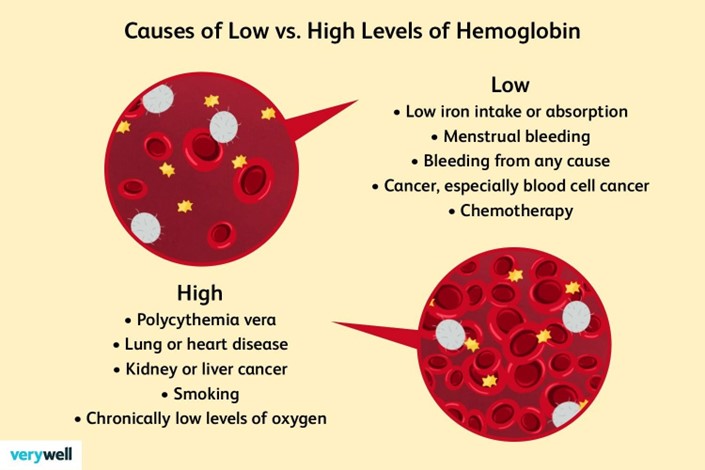A nurse is collecting data from a client whose Hgb is 8.8 mg/dL. Which of the following statements should the nurse expect?
"I feel tired all the time."
"I have noticed that my fingernails are becoming thicker."
"I have to go to the bathroom all the time."
"I notice that my hands are always shaky."
The Correct Answer is A
A hemoglobin (Hgb) level of 8.8 mg/dL indicates anemia, which is a decrease in the oxygen-carrying capacity of the blood. Fatigue and tiredness are common symptoms of anemia. When the body does not have enough hemoglobin to transport oxygen effectively, it can lead to feelings of fatigue and a lack of energy.
The other options are not directly associated with a low hemoglobin level:
b) "I have noticed that my fingernails are becoming thicker." Thicker fingernails are not typically associated with a low hemoglobin level. Changes in fingernails can be atributed to various factors, but they are not directly related to anemia.
c) "I have to go to the bathroom all the time." Frequent urination is not typically associated with a low hemoglobin level. It can be related to other factors such as urinary tract infections, diabetes, or diuretic use, among others.
d) "I notice that my hands are always shaky." Hand tremors are not directly associated with a low hemoglobin level. Tremors can have various causes, such as neurological conditions, medication side effects, or excessive caffeine intake, but they are not directly linked to anemia.

Nursing Test Bank
Naxlex Comprehensive Predictor Exams
Related Questions
Correct Answer is A
Explanation
Answer: A. Frequently remind the client of the expectations for her behavior.
Rationale:
A) Frequently remind the client of the expectations for her behavior:
Clients experiencing mania may have difficulty maintaining appropriate behavior due to their heightened energy levels and impulsivity. Frequently reminding them of behavioral expectations helps provide structure and boundaries, which can promote a safer and more controlled environment.
B) Encourage the client to participate in a group activity in the dayroom:
While social interaction can be beneficial, clients in a manic state might be overly stimulated by group activities. This can exacerbate their symptoms, leading to increased agitation or disruptive behavior. It's often more appropriate to provide a calm and low-stimulation environment.
C) Allow the client to pick her own choice of clothing:
Allowing a manic client to choose their own clothing can lead to choices that are inappropriate for the setting or the weather, as judgment may be impaired during mania. Providing guidance in clothing choices can help ensure the client is dressed suitably and safely.
D) Encourage the client to increase physical activity during the day:
While physical activity is generally beneficial, clients in a manic state may already be overly active and may not need encouragement to increase their activity. Overexertion can lead to exhaustion and further exacerbate manic symptoms. It is often more beneficial to encourage activities that promote relaxation and calmness.
Correct Answer is B
Explanation
The therapeutic relationship can be described in terms of four sequential phases: preinteraction phase, introduction/orientation phase, working phase, and termination phase . In the working phase, most of the therapeutic interventional activities are carried out . This is the phase where the nurse should help the client develop problem-solving skills.
The other options are not correct because:
a) The preinteraction phase starts when the nurse is given the responsibility to start a therapeutic relationship with a patient.
c) The introduction/orientation phase is the first meeting of the nurse with her client (patient).
d) The termination phase is the final stage of the nurse-client relationship.

Whether you are a student looking to ace your exams or a practicing nurse seeking to enhance your expertise , our nursing education contents will empower you with the confidence and competence to make a difference in the lives of patients and become a respected leader in the healthcare field.
Visit Naxlex, invest in your future and unlock endless possibilities with our unparalleled nursing education contents today
Report Wrong Answer on the Current Question
Do you disagree with the answer? If yes, what is your expected answer? Explain.
Kindly be descriptive with the issue you are facing.
